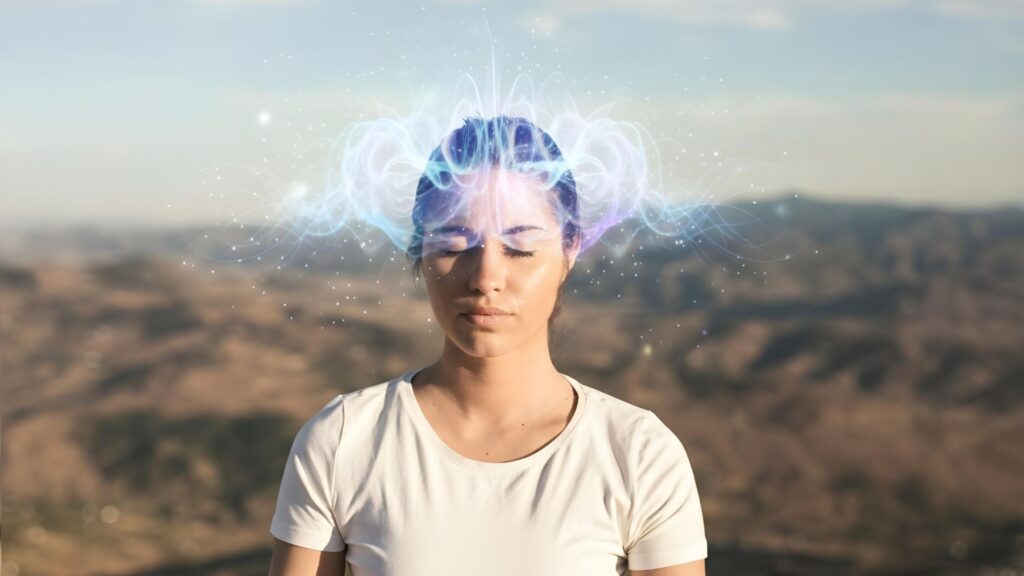Transcranial Magnetic Stimulation (TMS) is a powerful form of noninvasive brain stimulation that uses magnetic pulses to stimulate specific regions involved in mood regulation and cognition.
In this article, we will explain what part of the brain it targets, how it works, and why certain areas are chosen for stimulation in treatment.

The Basics of TMS
TMS works by delivering magnetic pulses that induce an electric current in the brain tissue beneath the magnetic coil. This magnetic stimulation activates neurons by causing depolarization or hyperpolarization, which changes the excitability of targeted areas. The stimulation intensity and site of stimulation are carefully controlled to achieve the desired effects.
Repetitive transcranial magnetic stimulation (rTMS) involves multiple magnetic pulses over time and is FDA-approved for treating depression and other conditions. It is mostly used especially when other treatments like medications or psychotherapy have not provided sufficient relief. Deep stimulation via specialized coils allows for stimulating brain structures located deeper beneath the surface. This magnetic stimulation impacts function by modulating neural circuits and altering brain network activity.
Primary Targets
The primary target, especially for depression, is the dorsolateral prefrontal cortex (DLPFC). This region plays a key role in mood regulation, decision-making, and executive function. Research shows that the DLPFC is often less active in depression, so electrical pulses are applied to stimulate this area and enhance its activity.
Other prefrontal regions that may be targeted include:
- Dorsomedial prefrontal cortex
- Ventromedial and orbitofrontal cortex
- Ventrolateral prefrontal cortex
- Frontopolar cortex
These areas are involved in various cognitive and emotional processes, and selective stimulation can influence connected areas to improve mental health. Depending on the condition, this type of therapy may stimulate the left or right hemisphere to maximize treatment efficacy.
Deep Brain Targets and Advances
While standard TMS typically stimulates cortical areas 2 to 4 cm below the scalp surface, advances in coil design allow deeper stimulation. Deep TMS coils penetrate up to 6 cm to stimulate structures such as the anterior cingulate cortex or subgenual cingulate. These deeper targets are critical for mood regulation and show promise in improving treatment outcomes.
Using brain mapping and magnetic resonance imaging (MRI), this therapy can precisely target these structures. Advances in neuronavigation technologies enable clinicians to personalize the stimulation site based on individual brain anatomy and functional connectivity, enhancing the efficacy of the electrical pulses used.

Brain Networks and Mechanisms
Transcranial magnetic stimulation not only directly affects the target area but also influences connected regions through their network activity. The induced current modulates excitatory and inhibitory neural circuits, resulting in changes in brain function both locally and distally.
The effect on brain activity depends on stimulation intensity, frequency, and timing. For example, high-frequency repetitive TMS increases cortical excitability, while low-frequency reduces it. Pulse timing relative to brain oscillations can shape the overall impact on neural processing.
Target Areas for Different Conditions
TMS therapy targets specific regions depending on the mental health condition being treated:
- Depression: Mainly targets the left DLPFC to improve mood and cognitive function.
- Obsessive-Compulsive Disorder (OCD): Targets dorsomedial prefrontal cortex, pre-supplementary motor area, and anterior cingulate cortex.
- Migraines and Smoking Cessation: Target various cortical regions implicated in pain perception and addiction pathways.
Methods to Identify and Guide TMS Targeting
Accurate targeting of regions is essential for effective TMS treatment. Various methods help identify the optimal stimulation site:
- Structural MRI-guided neuronavigation: Uses imaging to individualize coil placement based on each person’s brain anatomy.
- Standard “5 cm rule” and Beam F3 method: Approximate scalp measurements for DLPFC targeting when neuronavigation is unavailable.
- Functional MRI and Diffusion Tensor Imaging: Advanced techniques for mapping networks and connectivity to improve precision.
These approaches ensure the magnetic coil stimulates the intended area and maximizes treatment efficacy.
Final Thoughts from Quantum Wellness Center
TMS can effectively treat various mental health conditions by targeting specific regions and modulating connected networks. Advances in deep brain stimulation and mapping techniques allow clinicians to reach deeper structures and personalize treatments based on individual brain anatomy.
At Quantum Wellness Center we offer rTMS therapy in Sarasota, FL, which is tailored specifically to stimulate regions of the brain involved in mood, cognition, and emotional regulation with focused magnetic pulses. Unlike medications, this targeted stimulation avoids systemic side effects and fits seamlessly into a continued wellness routine. Supported by physician-led, personalized care designed to foster lasting transformation and optimized mental wellness, rTMS provides an effective, drug-free path to enhance brain function and well-being in a luxurious, peaceful, and supportive setting.



